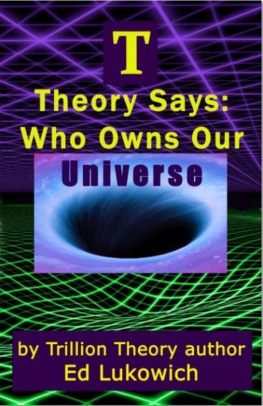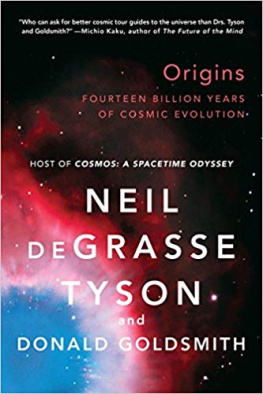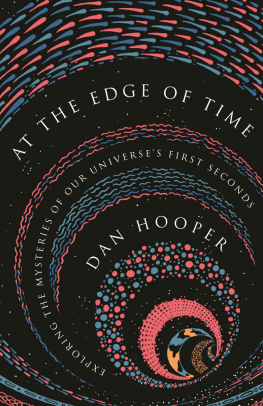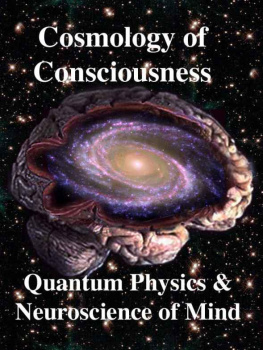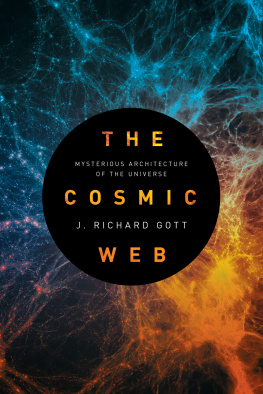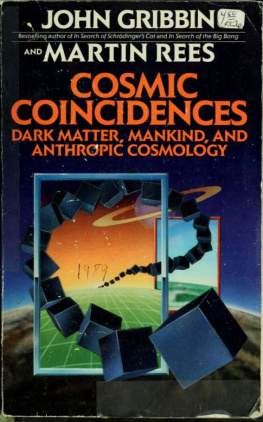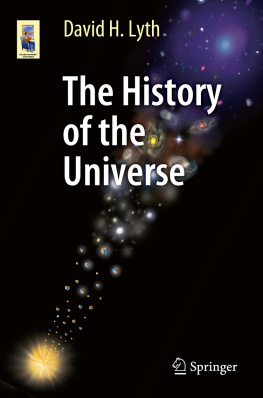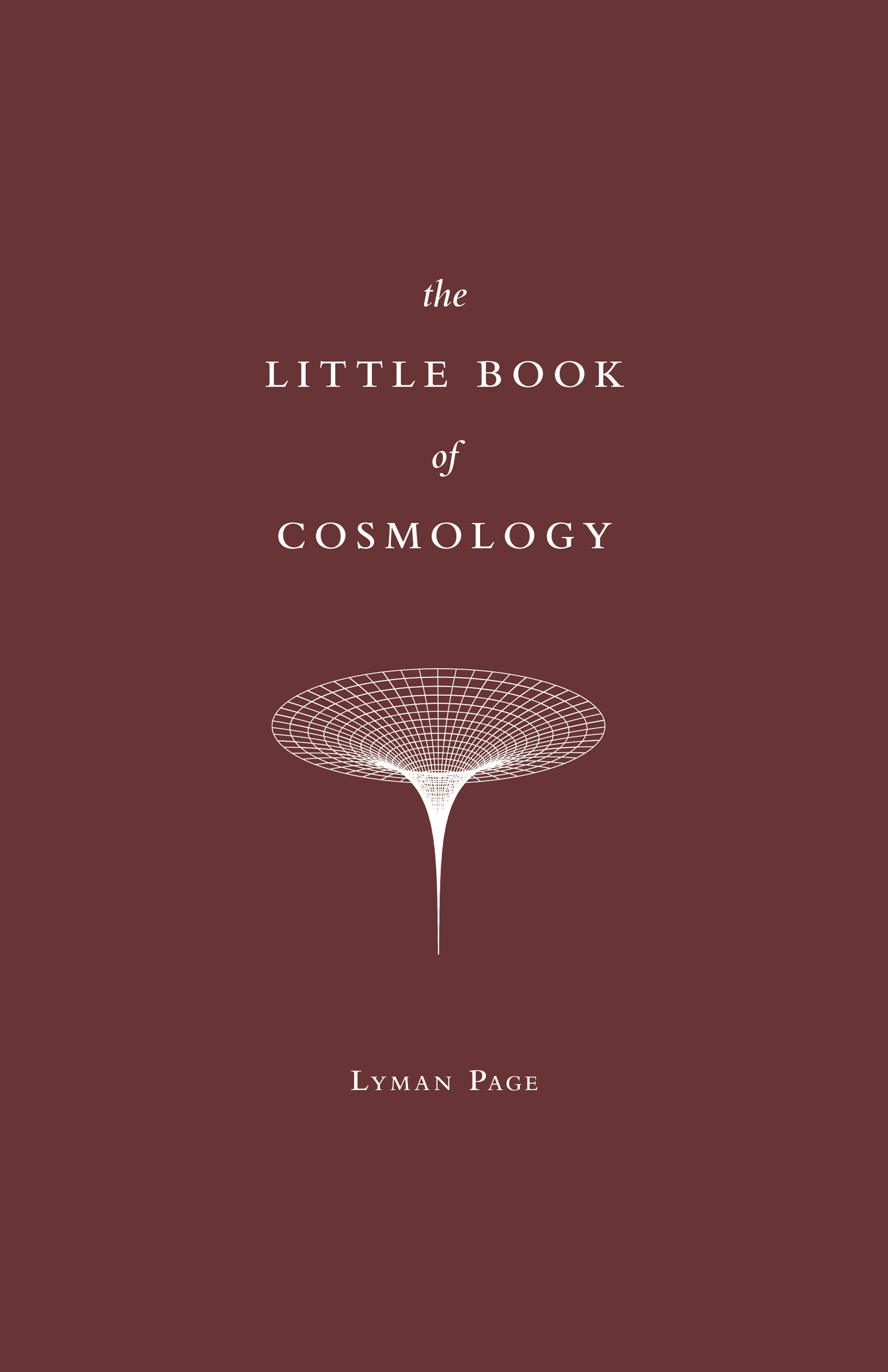PREFACE
These pages provide a brief introduction to modern cosmology, the study of the universe at the most extreme scales of space, energy, and time. My hope is that they convey some essential aspects of what we know about the universeincluding its composition, its geometry, its evolution, and the laws of physics that describe itand how we know it. The subject of the universe is ripe for wild theories and speculation, but these hide perhaps its most amazing aspect: we can understand the universe at its grandest scales to percent-level accuracy through measurement.
As we shall see, the universe at the largest scales and earliest times is remarkably simple and can be characterized with just a few parameters. It is much easier to understand than, say, the fascinatingly complex Earth, with its atmosphere, oceans, moving continents, and magnetic field, to name just a few attributes. In this book, I will try to explain not only current observations and measurements, but also how they can be woven together via physical explanations into a unified picture of the cosmos. The picture Ill describe is not the only possible one, but it explains the data with a minimal set of assumptions. Continuing observations will reveal whether it is correct.
Our knowledge of the universe is encapsulated in what we call the Standard Model of Cosmology, and it agrees remarkably well with observations. It is predictive, testable, and could easily be falsified or augmented if that were called for. Among other things, the model says that the universe is comprised of about 5% atomic material, the stuff of which we are made; about 25% dark matter; and 70% dark energy. Based on Einsteins theory of gravity, the Standard Model specifies how the various components of the universe evolve from the very earliest times to the present. Put another way, we take from general relativity a way of thinking about space and use it as a foundation for describing how the cosmic componentsthe radiation, atoms, dark matter, and dark energyfit together to make the universe we observe. All this said, although we have an excellent model of the universe, we do not yet have a fundamental understanding of its dominant constituents. There are exciting open questions in cosmology that continue to be investigated by scientists throughout the world, and we will cover some of them at the end of this book.
Following my own path to learning about cosmology, the focus of the book will be on understanding the universe through measurements of the Cosmic Microwave Background (CMB)the faint thermal afterglow of the birth of our universe. The evidence in support of this interpretation is overwhelming. Though the CMB resembles radiant heat from the Sun or from an electric stove burner, it has a much, much colder temperature. Hinting at its ancient origin, it is a mere 2.725C above absolute zero, or 2.725 K. But, there is much more to the CMB than just its temperature. Indeed, most of what we learn from it comes from tiny variations in its temperature from position to position across the sky. For example, the CMB is ever so slightly different in temperature in (to pick two arbitrary directions) the north and south celestial poles. Because the CMB can be measured in such exquisite detail, our understanding of it is the foundation for our cosmological model. However, before we delve into the various characteristics of the CMB and what they tell us, we will first need to develop some basic ideas of how to think about the universe as a whole.
In , Ill describe some of the frontiers of theoretical and experimental research in cosmology.
Cosmology is a vibrant and exciting field. The search for ever deeper knowledge on both theoretical and experimental fronts is ongoing. For observers of the cosmos, such as myself, the CMB continues to offer insightsand continued measurements may yet lead us to look at elements of the standard model in a new light, and may also guide us to new discoveries.
Before we begin, let me add a brief note about the level of this book. One of the challenges in presenting recent developments in science is to pitch ideas at the right level for the reader. While I define various terms and concepts with scientific specificity, throughout the book I do make some assumptions about the readers background knowledge and inherent level of interest. This said, I have added a few appendixes to provide a little more detail on certain topics, if needed. For example, I assume that readers will know that light is a wave of a certain wavelength that carries energy; however, and their wavelengths, in case the reader wants further information on the subject. Also, I expect that most readers will know that the speed of light is finite and a fundamental constant of Nature. However, what is less widely appreciated is that, no matter where you are in the universe or how fast you are moving, you will measure that the speed of light in a vacuum is 186,000 miles per second. This is one of the foundations of Einsteins special theory of relativity. To keep this book concise, I will not delve too deeply into relativity (there are many books that do this well already) or other such topics; but, as we go along, I will explain physical concepts related to our understanding of the cosmos in a little more detail than you may have encountered in the past. By necessity, I will be somewhat quantitative, but rest assured that the math needed will be at the level of distance = speedtime; and most of the time, we will use approximate numbers as they are easier to grasp.
A tricky element in cosmology is that the distances and timescales are so large they can be difficult to imagine. To make them easier to comprehend, we will count things in billions. To put this number in some context, there are somewhat more than seven billion people on Earth; the tip of your little finger contains about one billion cells; and one billion M&Ms would slightly overfill a cubic box about six meters on a side. Since this is a popular-level book (and hoping my colleagues forgive me), there are no scientific references, and the attribution of specific ideas and findings is minimal.
There is a lot to cover in this short booka whole universeso lets get going!
The CMB is often called the 3K background because 2.725 K is almost 3 K. The number of C above absolute zero corresponds to the kelvin temperature scale. That is, 1C above absolute zero is 1 K; there is no sign for kelvin. A change of, say, 0.01C is the same as a change of 0.01 K. In this system, which we will use from here on, absolute zero is 273.14C, water freezes at 0C or 273.14 K, and boils at 100C or 373.14 K. The Sun is about 5500C or 5773 K, which we will approximate as 6000 K from here on.


